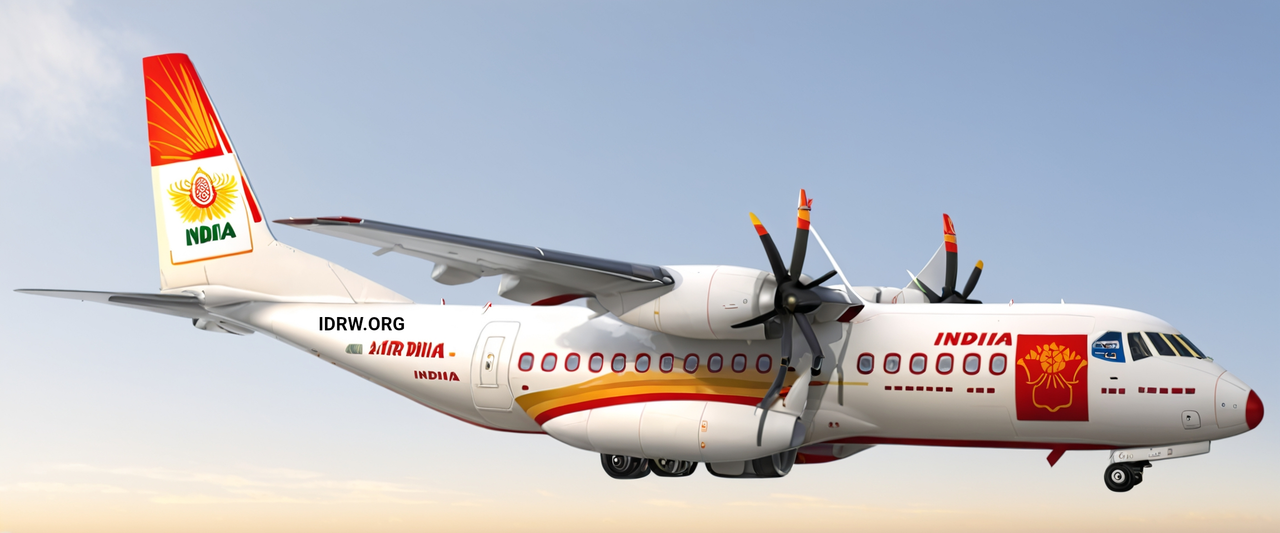SOURCE: AFI


With the inauguration of Tata’s C-295 production facility in Gujarat, the Tata Group has taken a substantial step towards establishing a domestic aircraft manufacturing ecosystem in India. While the primary objective of this facility is to produce C-295 aircraft for the Indian Air Force (IAF), Tata is keenly exploring the potential to develop a civilian variant of this versatile aircraft. If the plan materializes, Air India, which is owned by the Tata Group, could be the first airline to operate this civilian C-295, adding turboprop capabilities to its fleet for the first time.
Tata’s interest in a civilian C-295 is strategic. Turboprops serve a vital role in connecting smaller regional airports and shorter runways that larger commercial jets cannot easily access. In a country like India, with a sprawling geography and many regional airports under the UDAN (Ude Desh ka Aam Nagrik) scheme, a domestically produced turboprop aircraft could fill a significant gap in regional aviation. With Tata holding the rights to produce the C-295 and its experience in manufacturing and operations, this civilian variant could be positioned as a competitive alternative for regional carriers looking to expand into underserved routes.
As a part of the Tata Group’s vision for Air India, the airline is undergoing a major fleet and service overhaul. Currently, Air India does not operate any turboprop aircraft, relying exclusively on narrow-body and wide-body jets such as the Airbus A320 family, Boeing 787 Dreamliners, and Boeing 777s, which are suited for medium-to-long haul routes. The C-295 would introduce a new capability to its fleet, providing flexibility to operate on shorter routes and reach regional destinations where passenger demand is not high enough to justify a larger aircraft.
Operating a fleet of turboprops could also help Air India address domestic connectivity challenges and build on the government’s regional connectivity initiatives, complementing its current fleet of narrow-body jets. This move could give Air India a unique advantage, positioning it to capture an untapped market segment and improve connectivity across India’s diverse geography.
Potential Advantages of the C-295 Civilian Variant
Domestic Production Advantage: Being domestically manufactured, the C-295 could bring cost benefits in terms of maintenance, support, and fleet expansion, as Tata could streamline the supply chain within India, aligning with the “Make in India” initiative.
Regional Connectivity: The C-295’s short take-off and landing capabilities allow it to access smaller airports and operate from short runways, making it ideal for regional routes.
Fuel Efficiency and Cost-Effectiveness: Turboprop aircraft like the C-295 are generally more fuel-efficient over short distances, reducing operational costs on regional routes.
Passenger and Cargo Versatility: The civilian C-295 could be configured for both passenger and cargo operations, offering a flexible solution for operators needing to serve mixed-traffic routes.
The Indian market for regional aircraft is currently dominated by Bombardier’s Dash 8 and ATR turboprops, which are widely used by airlines like IndiGo and Alliance Air on shorter, regional routes. A domestically manufactured civilian C-295 would enter this competitive market but with several advantages: a local production base, potentially lower costs, and a high degree of customization for Indian operational needs. If successful, it could not only cater to Air India but also be an attractive option for other Indian airlines and regional operators.
Developing a civilian variant of a military aircraft poses unique challenges, from regulatory approvals to modifications for passenger comfort and operational efficiency. Tata would need to address these aspects comprehensively to ensure the civilian C-295 meets all necessary standards for commercial operations. Additionally, Air India would need to develop new operational protocols, training, and support systems to integrate turboprops effectively within its jet-focused fleet.
If Tata’s vision for a civilian C-295 materializes, it would mark a significant leap for India’s aviation industry. Not only would it strengthen Tata’s position as a key player in both military and civilian aircraft manufacturing, but it would also signal India’s emergence as a serious contender in the global aerospace market. For Air India, operating a domestically manufactured aircraft could further reinforce its commitment to India’s aviation future, aligning its operational strategy with the nation’s industrial growth.